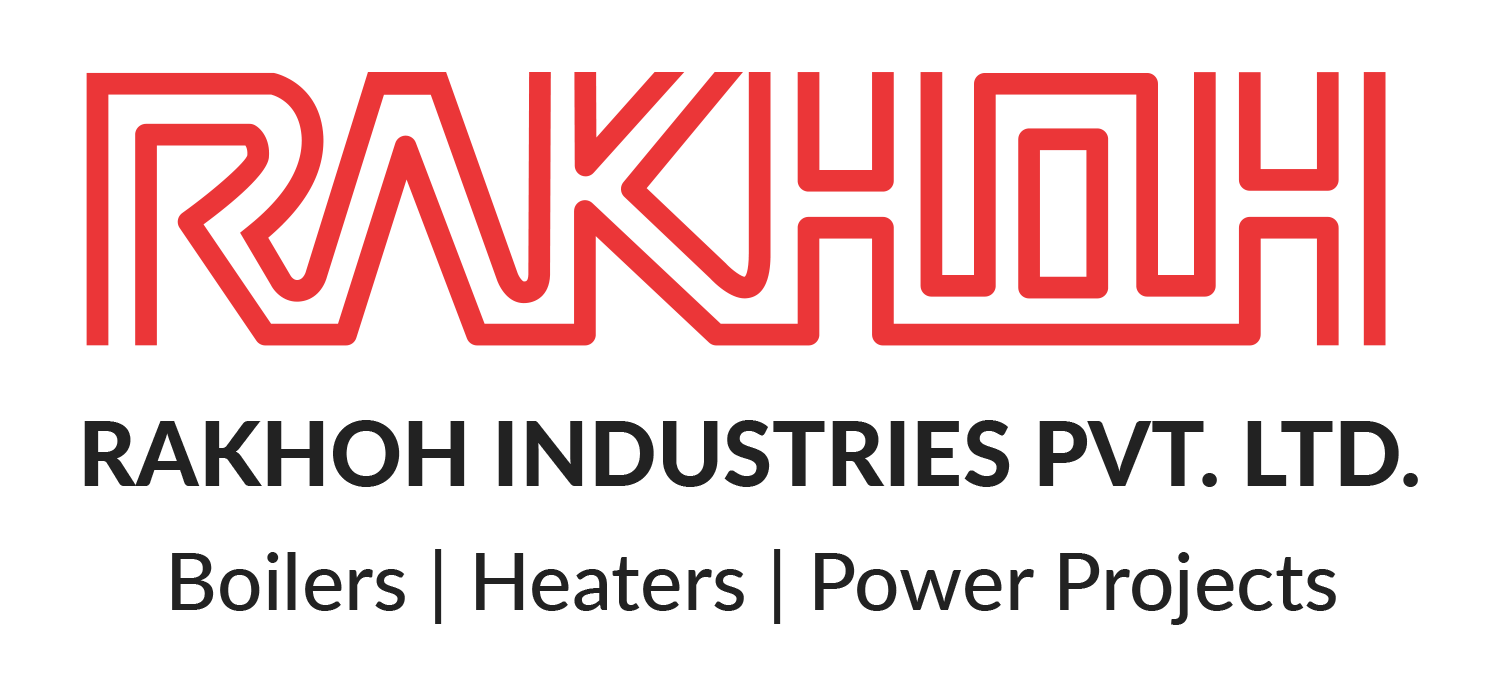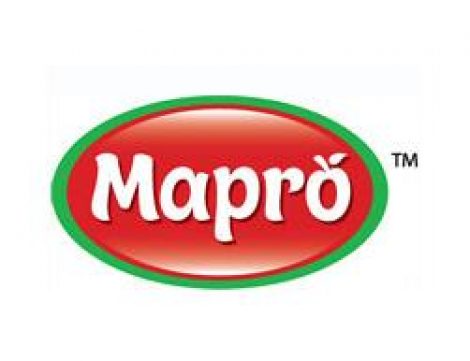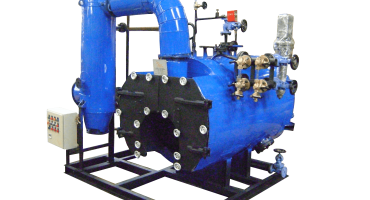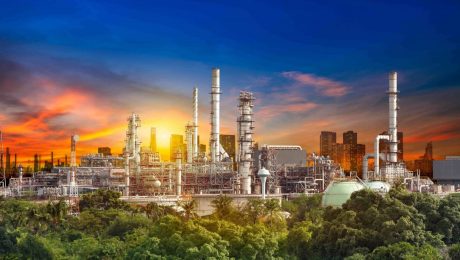An Overview of Scaling and Corrosion in Boiler Water
One of the most important factors ensuring the proper functioning of steam boilers is boiler water quality. As the steam is generated through the fuel combustion and heating of water, boiler water quality plays an integral role in steam production. Steam boiler receives the boiler water as a combination of freshwater, such as ground or surface water, purified with a water treatment system, and condensed water that is returned from the process of steam boiler. Both types of water consist of impurities that impact the efficiency of the steam boiler. Therefore, it is necessary to determine the impurities present in these streams for a proper feedwater treatment system.
Causes of Scaling in Steam Boilers:
Scaling in a steam boiler is caused by deposits formed on the internals of piping and heat transfer surfaces as the water is heated and impurities precipitate. The deposits later build up and hinder heat transfer or, in severe situations, cause failure of the tube and steam boiler system. Boiler water includes suspended solids such as silica in it. When boiler water containing silica is heated for steam generation, it leads to forming extremely hard deposits on the internals of the steam boiler on heat transfer surfaces.
The primary boiler water contaminants causing scaling in the steam boiler are:
- Silica
- Calcium
- Aluminum
- Iron
- Magnesium
The intensity of scaling in the steam boiler depends on the amount of the impurities as well as the pressure of the operating steam boiler. High-pressure boilers require a higher quality of boiler water containing lesser impurities compared to lower pressure boilers.
Causes of Corrosion in Steam Boilers:
Corrosion in steam boilers is the breakdown of the metal components that are caused due to various reasons. One of the primary reasons is the dissolved oxygen and carbon dioxide presence that destroys the areas of the steam boiler and causes stress and cracking in the steam boiler system.
Corrosion usually takes place in the most heated parts of the steam boiler that leads to high temperatures, and cracking of the metals increases the breakdown of the materials. It is essential to note that different metals and materials in the steam boiler react differently with the gases and contaminants present, resultantly causing corrosion.
Various types of corrosion that take place in a steam boiler include:
- Galvanic corrosion
- Acidic corrosion
- Caustic corrosion
- Oxygen attack
- Carbon dioxide attack
- Hydrogen embrittlement
Types of corrosion depend on the appropriate pH, oxygen level, amount of solids, and steam boiler design.
Preventing Scaling and Corrosion in Steam Boiler:
- Determining the impurities in boiler water:
As mentioned, boiler water includes two types of water used for steam generation. It consists of fresh water derived from the plant and condensed water returned from the operational process of the steam boiler. Both water types have their share of impurities that will impact the efficiency of the steam boiler.
- Examining unique chemistry of boiler water:
Plant managers follow general guidelines provided by the boiler manufacturer for the steam boiler, depending on its operational pressure. It is advisable to refer to these guidelines while planning a boiler water treatment plan.
- Assessing if the steam boiler is at risk:
High-pressure steam boilers need higher quality boiler water with minimal contaminants present. Therefore, a boiler water treatment program must be performed to prevent the formation of scale and corrosion in steam boilers.
- Regular boiler water treatment program:
Regular and proper pre-treatment for the boiler water manages the internal chemistry of the steam boiler and handles return line corrosion, which is crucial to prevent and control the scale formation and corrosion in steam boilers.
Working of Boiler Water Treatment:
Effective boiler water treatment involves the utilization of chemicals to eliminate corrosive substances, balancing pH levels, and managing the conductivity of boiler water.
Boiler water treatment chemicals are injected into the feedwater at predetermined points for removing the substances that cause corrosion and scaling. These boiler water treatment chemicals include:
- Oxygen Scavengers:
Oxygen scavengers include sulfite that effectively removes the oxygen that remains after the passing of water through the deaerator as oxygen is a catalyst for corrosion.
- Scale Inhibitors:
Scale inhibitors involve introducing phosphates to the boiler water stream to bind the calcium ions and managing them from binding to metal parts that cause scale formation in steam boilers.
Solution for Scaling and Corrosion in Steam Boilers:
Without the proper material, the chemical treatment of boiler water impacts the flow rate, strength, and pressure of the steam boiler systems because:
- A high amount of sulfites are corrosive to various common types of metallic materials.
- Acid phosphate solutions can be corrosive to metallic feed systems with orthophosphate treatments producing deposits in the feed line.
Rakhoh Boilers have been proficient in steam boiler manufacturing and thermal solution since their inception in 1983. We manufacture a range of efficient steam boilers, waste heat recovery boilers, thermic fluid heaters, and boiler accessories. To ensure high efficiency and performance of the steam boiler, we provide excellent boiler services like steam trap assessment, boiler automation, fuel conversion, energy audit, annual boiler maintenance, etc.
Learn more about our products and services by visiting www.rakhoh.com
- Published in Boiler
An Introduction to Reverse Osmosis in Steam Boilers with its Advantages and Disadvantages
Steam boilers and their operation are integral in the process and manufacturing industries. Boiler water is pivotal in ensuring the proper functioning of the boiler system. Reverse osmosis in steam boilers refers to a crucial process that ensures high-quality boiler water for steam generation. Boiler water includes two important resources, steam condensate return and makeup water. Earlier, there were few alternatives to increase the boiler water quality through softening or demineralizing the makeup water or increasing the condensate return. However, with recent advancements, the efficiency of Reverse Osmosis (RO) has tremendously improved in the quality of water produced, the quantity of water, and the cost of operating the system.
What is Reverse Osmosis in Steam Boilers?
Reverse osmosis in steam boilers is a process used for the extraction of mineral content and impurities from the boiler water. Reverse osmosis in steam boilers is usually performed to purify brackish water into freshwater or to make water consumable through the removal of minerals from the water. The bottled water in markets often promotes their brand as reverse osmosis (RO) purified water.
Role of Reverse Osmosis in Steam Boilers:
Reverse osmosis in the steam boiler is essential for the purification of boiler water and the performance of steam boiler systems. Reverse osmosis in steam boiler ensures two important factors:
- Purification of the boiler water for cooking purposes:
Steam boilers utilized for food or brewing process operation require reverse osmosis to ensure the hot water is consumable and would not negatively impact the taste of the processed product.
- Safeguarding the steam boiler from mineral buildup:
As boiler water boils, it turns to steam and releases into the air as a gas. Contrary to water, the salt and other minerals in the steam fail to evaporate. As a result, these minerals consequently build up as scales inside the steam boiler system, leading to the formation of hotspots and inefficiency in performance, and in severe cases, system failures. Reverse osmosis in the steam boiler eliminates the mineral content before the boiler water is fed to the feedwater tank, thus ensuring hassle-free operation of the steam boiler.
Working of Reverse Osmosis in Steam Boilers:
Reverse osmosis is an effective technique used for purifying boiler water. Reverse osmosis in a steam boiler operates by forcing a stream of pressurized water through a semi-penetrable membrane that eliminates bacteria, contaminants, and other small particles, thereby purifying the boiler water.
With the technical advancement in reverse osmosis, it now offers water flowing out of the membranes at almost 100% purity in some cases.
Advanced reverse osmosis in steam boilers uses a reduced pressure flow of water, resulting in low energy used in the pumps and, consequently, less cost.
Advantages of Reverse Osmosis in Steam Boiler:
- Considerable increase in the steam boiler cycles of concentration and reduced heat loss
- Reduced use of makeup water
- Over 98% removal of dissolved solids in the boiler water, including salts causing scale formation that reduces heat transfer
- Increased efficiency of the steam boiler with minimal boiler deposits
- Reduction of alkalinity in boiler water through the direct result of less neutralizing amine use
- Reduction in fuel cost and makeup water for heating as well as clean heat transfer surfaces
Disadvantages of Reverse Osmosis in Steam Boilers:
- Initial investment cost of the equipment
- Membranes of Reverse Osmosis need cleaning or replacement periodically, in approximately 3 years.
- Steam boilers operating with large loads may not result in optimal output from the Reverse Osmosis unit, hence affecting the quality.
- Water pre-treatment may be required, depending on the reverse osmosis boiler water quality. Highly chlorinated or waters with high scale-forming salts require pre-softening or treatment with sulfite or acid.
- Over 20-25% of Reverse Osmosis water is wasted in the drain if it cannot be used for another purpose.
Challenges Without Reverse Osmosis in Steam Boilers:
Regular maintenance of steam boilers can help to reduce operational costs by keeping low power consumption and avoiding downtime because of repairs. Reverse osmosis in steam boilers as pre-treatment significantly reduces costs due to poor maintenance of the steam boiler.
Reverse osmosis reduces the dissolved solids that result in scaling. Elimination of these contaminates enhances the steam boiler efficiency and increases its productivity. The pH level of boiler water is an essential factor for steam boiler efficiency.
Reverse Osmosis as Solution:
Placing reverse osmosis in the steam boiler before a demineralizer reduces the number of regeneration cycles that reduce the consumption of acid and caustic.
Installing a Reverse Osmosis instead of a softener will reduce fuel costs due to higher operating cycles. It also reduces the steam purity issues due to the low quality of boiler water from the softener that increases the alkalinity in the boiler water, consequently increasing condensate corrosion levels.
Conclusion:
For efficient and reliable steam boilers and thermal solutions for your process plant, contact Rakhoh Boilers, one of the leading boiler manufacturers in Pune with 38+ years of expertise. We have successfully installed 3000+ boilers in over 26 countries worldwide.
For more details on our products and services, visit www.rakhoh.com
- Published in Boiler
A Guide to Control Total Dissolved Solids in the Steam Boiler
An Introduction to Total Dissolved Solids (TDS) in Boiler System:
Industrial steam boilers generate steam by transferring heat to the water that is utilized for the processing operation. The water used for steam generation is known as boiler feed water that contains impurities that do not boil off with steam and concentrate in the boiler water. The dissolved solids eventually become denser, resulting in steam bubbles failing to burst as it reaches the water surface in the steam boiler. Depending on the boiler size, pressure, and steam load, the major part of the boiler gets accumulated with bubbles and leading to foaming in the steam main.
Foaming is adverse to the boiler system as it results in wet steam with boiler water that contains a high level of dissolved and suspended solids. It causes contamination in heat exchangers, control valves, and steam traps. The concentration of impurities in the steam boiler is termed Total Dissolved Solids (TDS).
Foaming can be controlled by monitoring its causes, such as the high amount of suspended solids, contamination by fats and oils, and high alkalinity. Even with proper monitoring of these factors, the process plant needs to ensure proper control of the high level of Total Dissolved Solids (TDS) in the boiler water to prevent foaming and carryover. TDS is expressed in ppm unit and can be measured by conductivity or density method
Calculating Total Dissolved Solids (TDS) Level:
Conductivity Method:
The type and amount of dissolved solids impact the electrical conductivity in the boiler water. Because acid and alkalinity have a significant effect on electrical conductivity, it is essential to neutralize the boiler water. The neutralization of the water sample takes place by the following procedure:
- Adding some drops of phenolphthalein indicator to the solution (less than 25°C)
- The solution turns dark purple in color at being alkaline
- Steadily add drop-by-drop acetic acid to neutralize the solution until the color disappears
The formula to measure TDS through the conductivity method is:
TDS (ppm) = (conductivity in μS/cm) X 0.7
Density Method:
The density of the boiler water is related to the dissolved solids in it. In the case of boiler water, an increase of 0.0001 of density at 15.5°C is around 110 ppm, and a hydrometer helps to obtain an exact measurement of the dissolved solids. However, the hydrometer cannot approximately measure the density of feedwater and condensate as it is close to the density of pure water. A hydrometer is a sensitive instrument and requires careful handling while measuring density through the following procedure:
- Boiler water sample must be filtered to remove any suspended solids
- The water must be cooled to 15.5°C
- Place the hydrometer in the water sample and whirl it to remove bubbles
- Read the relative density
TDS can be found through a chart available with a hydrometer or can be calculated manually with the formula:
TDS (ppm) = (relative density at 15.5°C – 1) X 1.1 X 106
Determining the Required Level of Total Dissolved Solids in Boiler Water:
The precise dissolved solid concentration that leads to foaming varies from the boiler to boiler. Generally, shell boilers operate optimally with TDS in the range of 2000 ppm whereas large boilers operate with TDS levels up to 3500 ppm. TDS level of water can be controlled by:
- Ensuring the boiler operate to its design pressure
- Proper steam load conditions
- Other boiler water factors are monitored and controlled
Effects of High Total Dissolved Solids:
High Total Dissolved Solids Concentration results in increased deposition or scale formation on the tube surface that hinders the heat transferring from flue gases to the water and leads to overheating the tubes. With a high level of TDS, the bubbles formed during boiling carry the solids with them that reduce heat transfer rate, and increase fuel requirement, thereby reducing the boiler efficiency. Carryover of the solids reduces the quality of the steam and damages heat exchangers, steam traps, and control valves. The TDS level also increases with the chemical treatment of makeup water that increases the Blowdown requirement.
Reducing Total Dissolved Solids in Boiler Water:
Controlling Total Dissolved Solids ensures optimal efficiency of the steam boiler and prevents excess loss. Rakhoh Boilers, with their 38+ years of expertise in thermal solutions and world-class boiler manufacturing, has assisted more than 20 process industries worldwide by delivering efficient steam boilers and excellent boiler services. Understanding the consequences of high TDS level, here are some of the ways to control it for enhanced boiler productivity:
Regular Blowdown:
Blowdown aids in controlling TDS level and sludge formation, hence preventing the carryover of boiler water with the steam. Manual bottom blowdown through valves must be conducted at frequent intervals to remove the sludge. Automatic blowdown senses the exceeding TDS concentration and automatically opens the blowdown valve.
Demineralization:
In this process, the boiler water is pretreated with ion exchangers to separate the dissolved solids like sulfates and chlorides of sodium, calcium, magnesium, and potassium. It is washed with chemicals in an exchanger.
Returning condensate:
Condensate has similar properties to distilled water that helps to maintain water quality if returned to the water tank. It reduces the level of TDS, thereby reducing the blowdown requirement. Reduced blowdown lowers the heat energy loss and reduces the cost of chemical treatments and freshwater, leading to energy savings.
- Published in Steam Boiler








